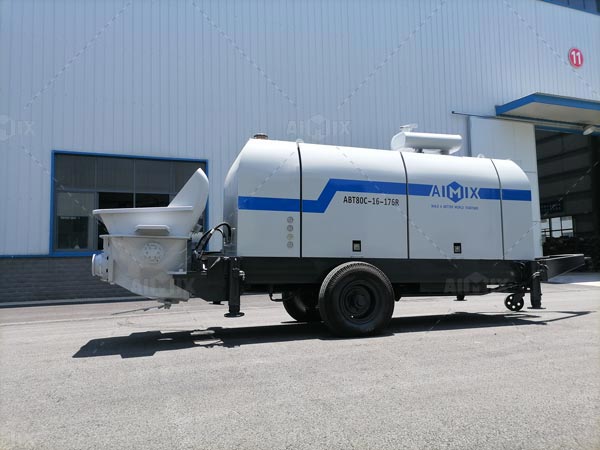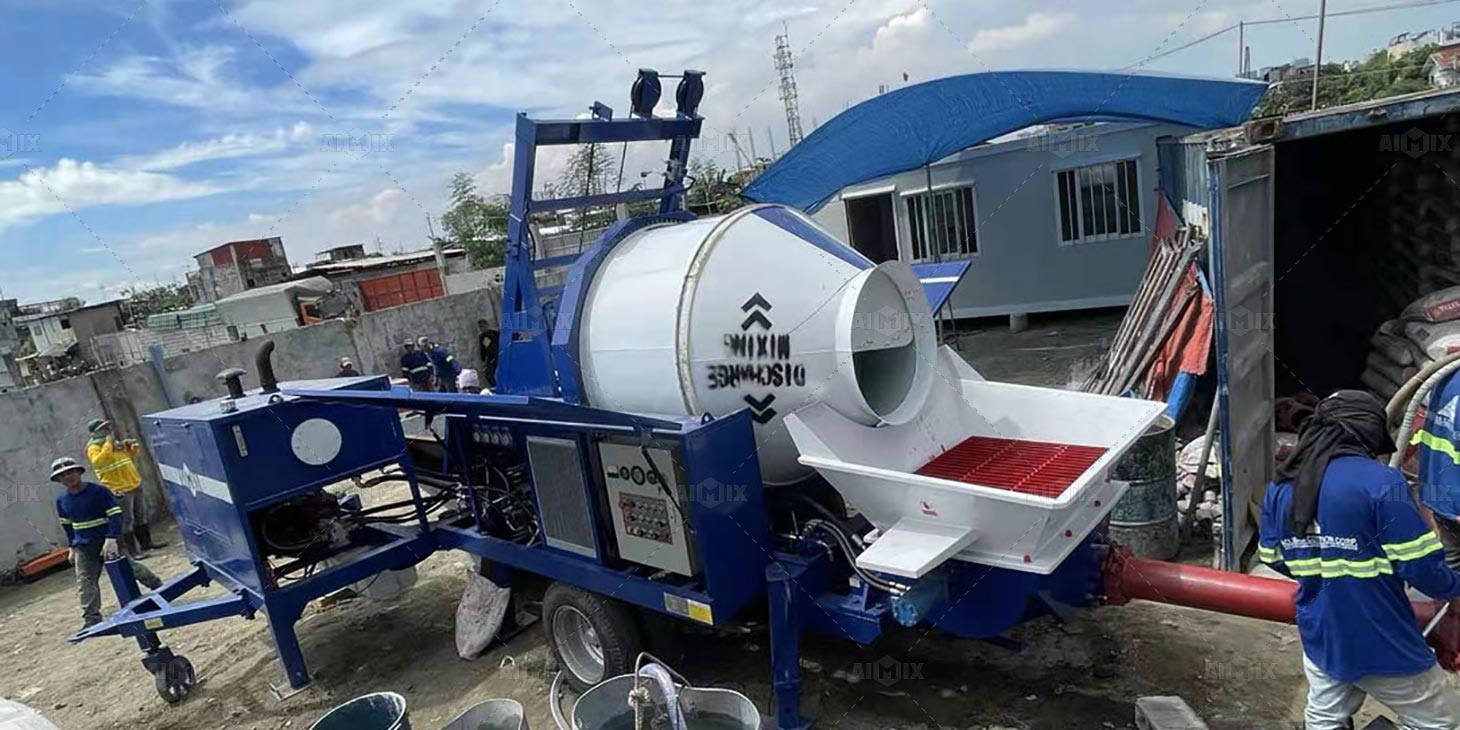Concrete pumps are essential equipment in construction projects, facilitating the efficient transportation and placement of concrete. However, like any machinery, they require regular maintenance and occasional repairs to ensure optimal performance and longevity. Knowing how to perform concrete pump repairs and parts replacement is crucial for contractors and operators to minimize downtime and maintain project timelines.
Concrete pump repairs and parts replacement involve several steps to diagnose issues, identify faulty components, and execute repairs effectively. By following proper procedures and safety protocols, operators can address common pump problems and extend the lifespan of their equipment.
Diagnosing Concrete Pump Issues
Before initiating repairs or parts replacement, it’s essential to diagnose the underlying issues affecting the AIMIX concrete pump‘s performance. This process involves thorough inspection and testing to identify specific problems and determine the appropriate course of action.

Visual Inspection
Start by visually inspecting the exterior of the concrete pump for any signs of damage, leaks, or abnormal wear. Check the hydraulic hoses, pipes, valves, and seals for cracks, corrosion, or loose connections. Pay attention to the pump’s overall condition and cleanliness, as debris buildup can impede operation.
Functional Testing
Next, conduct functional tests to assess the pump’s performance and identify operational issues. Test the pump’s hydraulic system, including the pressure levels, flow rate, and responsiveness of controls. Evaluate the pump’s ability to prime, discharge concrete smoothly, and maintain consistent output.
Diagnostic Tools
Utilize diagnostic tools, such as pressure gauges, flow meters, and vibration analyzers, to gather data and pinpoint potential problems. Monitor key parameters during pump operation to detect abnormalities or deviations from expected values. Analyze collected data to diagnose underlying issues accurately. Learn more details here: https://concretemixerwithpump.com/concrete-pump-for-sale-in-nigeria/.
Replacing Faulty Parts
Once the concrete pump issues are identified, it may be necessary to replace faulty or worn-out components to restore optimal functionality. Proper parts replacement requires careful planning, proper tools, and adherence to manufacturer guidelines.
Identifying Replacement Parts
Refer to the pump’s manual or consult with a qualified technician to identify the correct replacement parts for the specific make and model of the concrete pump. Order genuine OEM parts from reputable suppliers to ensure compatibility, quality, and performance.
Preparation and Safety
Before starting the replacement process, ensure the pump is powered off and depressurized to prevent accidents or injuries. Gather the necessary tools, equipment, and safety gear, including wrenches, sockets, hydraulic jacks, and protective gloves.
Replacing Components
Carefully remove the damaged or worn-out parts, such as seals, bearings, pistons, or hydraulic cylinders, following proper disassembly procedures. Clean and inspect the surrounding components for any signs of damage or contamination. Install the new parts according to manufacturer specifications, using the appropriate tools and techniques.
Performing Repairs
In addition to parts replacement, concrete pump repairs may be necessary to address mechanical failures, hydraulic leaks, or electrical issues. Proper repair procedures ensure the concrete mixture pump‘s reliability, safety, and efficiency during operation.
Repairing Hydraulic Systems
Inspect hydraulic lines, valves, and fittings for leaks, cracks, or malfunctioning components. Repair or replace damaged parts as needed, using high-quality hydraulic seals, O-rings, and fittings. Test the hydraulic system for leaks and proper operation before resuming pump operation.
Addressing Mechanical Failures
If the concrete pump experiences mechanical failures, such as gearbox issues or motor malfunctions, consult with a qualified technician or mechanic to diagnose and repair the problem. Disassemble the affected components, inspect for damage, and perform necessary repairs or replacements to restore functionality.
Electrical Troubleshooting
For electrical issues, such as malfunctioning sensors, control panels, or wiring, conduct thorough troubleshooting to identify the root cause. Check electrical connections, fuses, and components for damage or loose connections. Repair or replace faulty electrical parts and ensure proper grounding and insulation to prevent electrical hazards.
In conclusion, knowing how to perform concrete pump repairs and parts replacement is essential for maintaining the reliability and efficiency of construction equipment. By following proper diagnostic procedures, identifying faulty components, and executing repairs accurately, operators can minimize downtime, reduce maintenance costs, and ensure project success. Regular maintenance and proactive troubleshooting are key to maximizing the service life of small concrete pumps and optimizing construction operations.